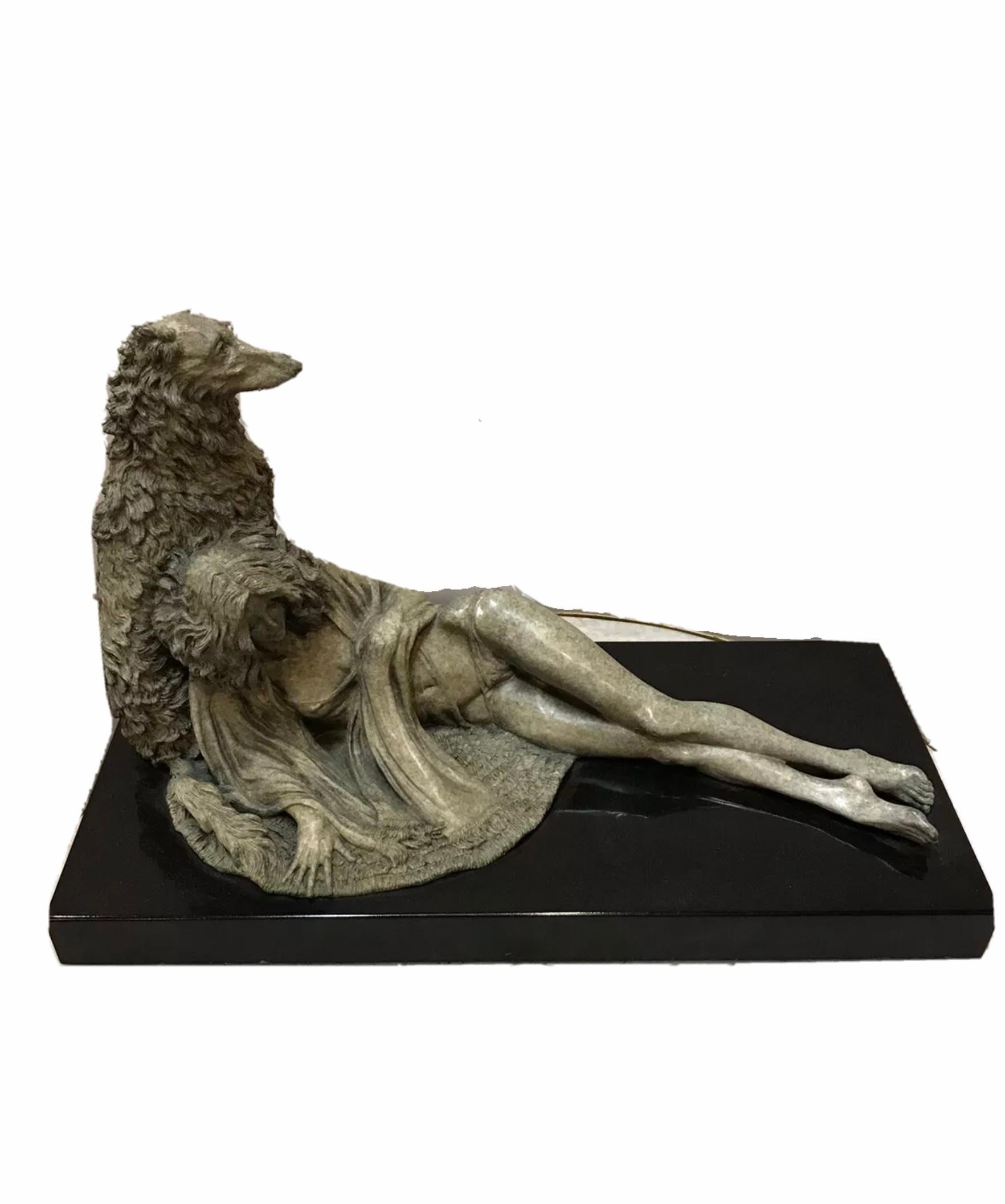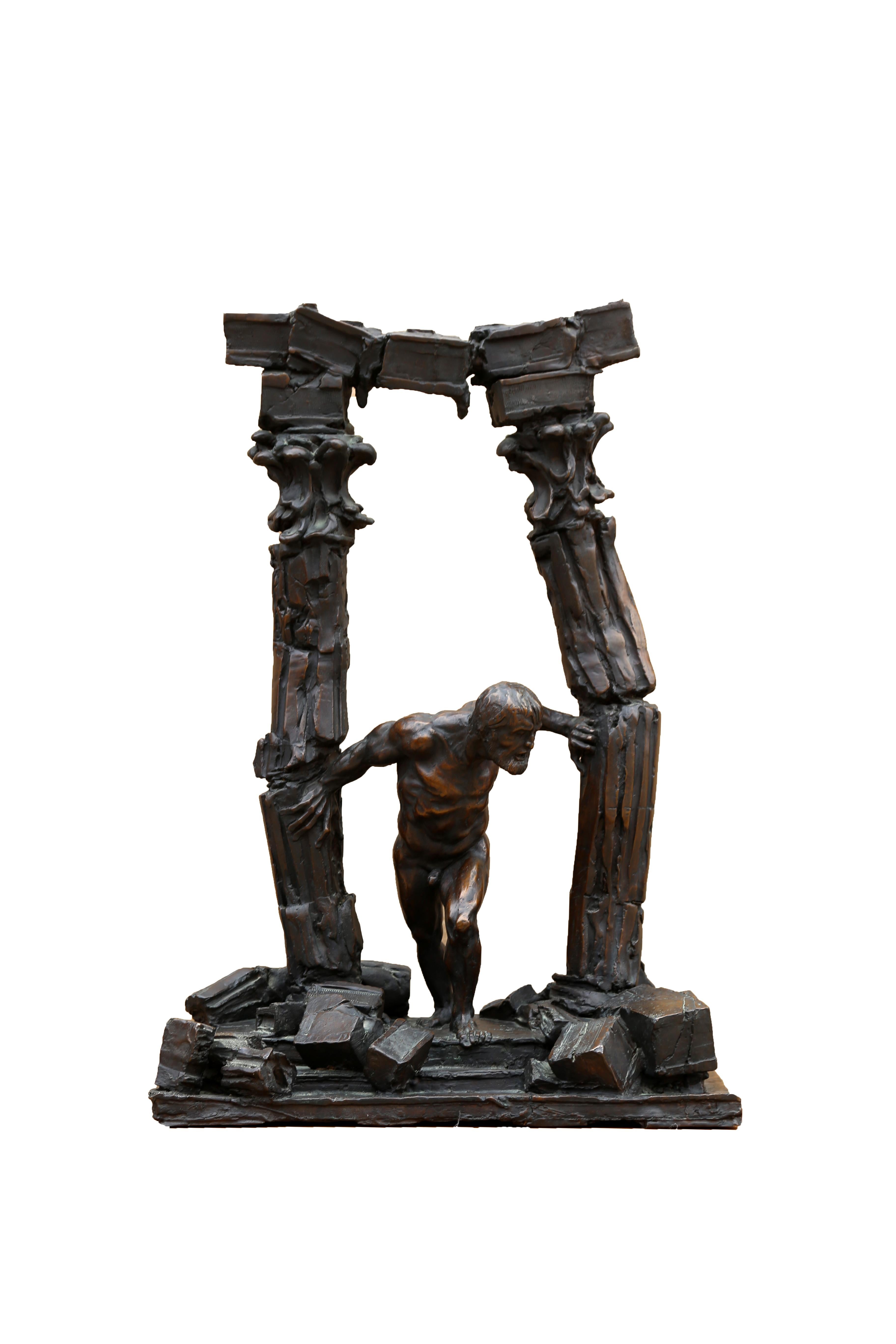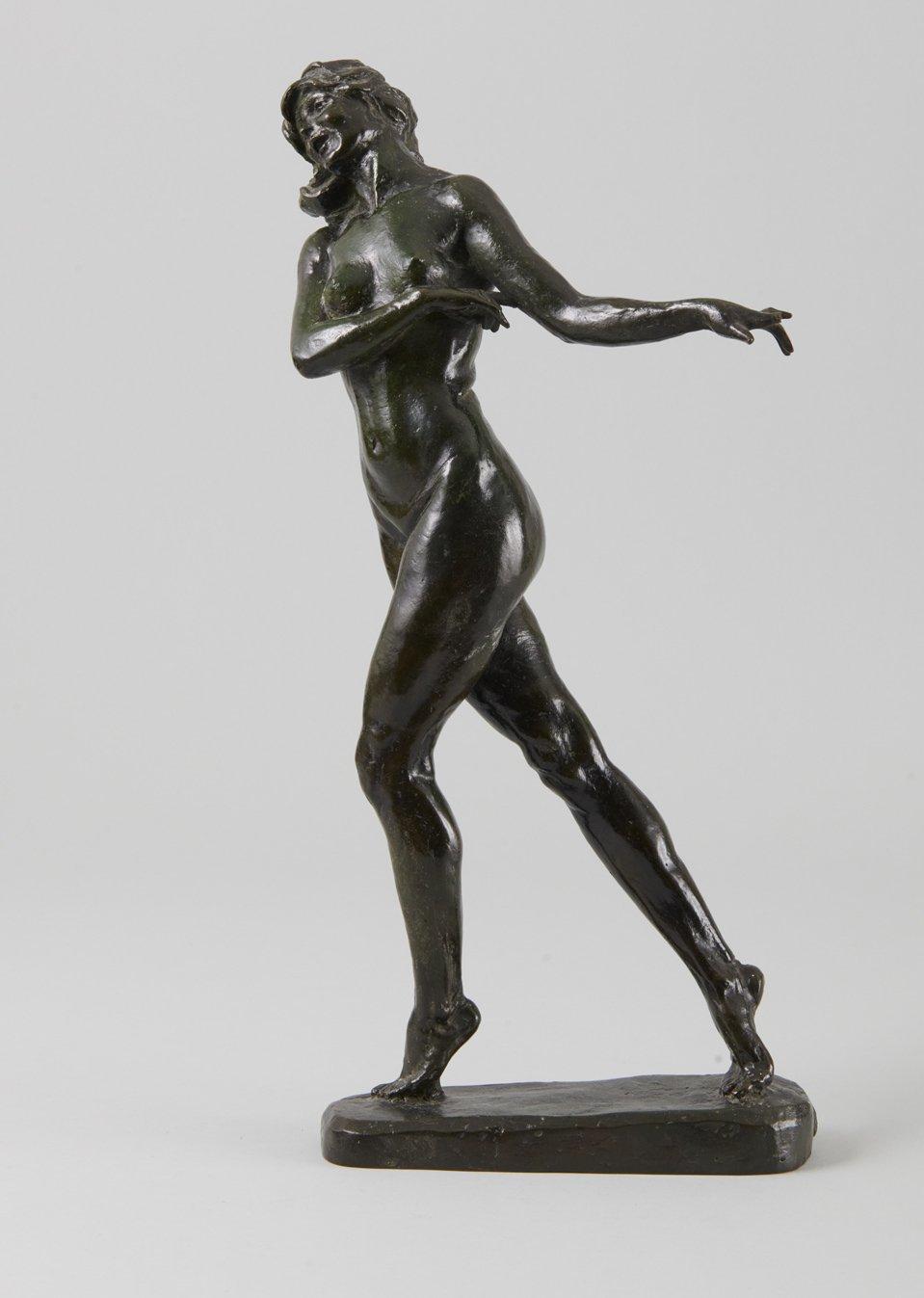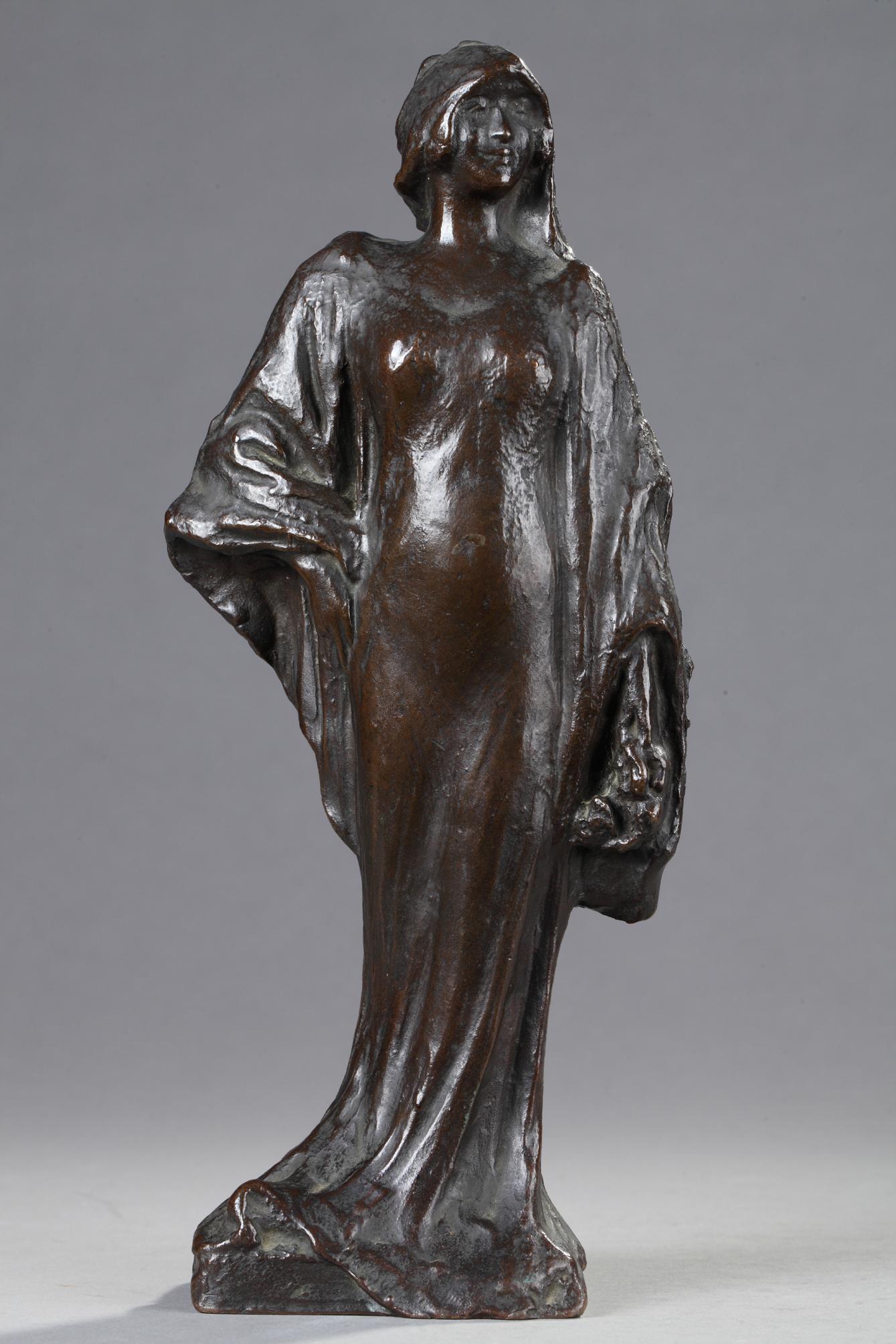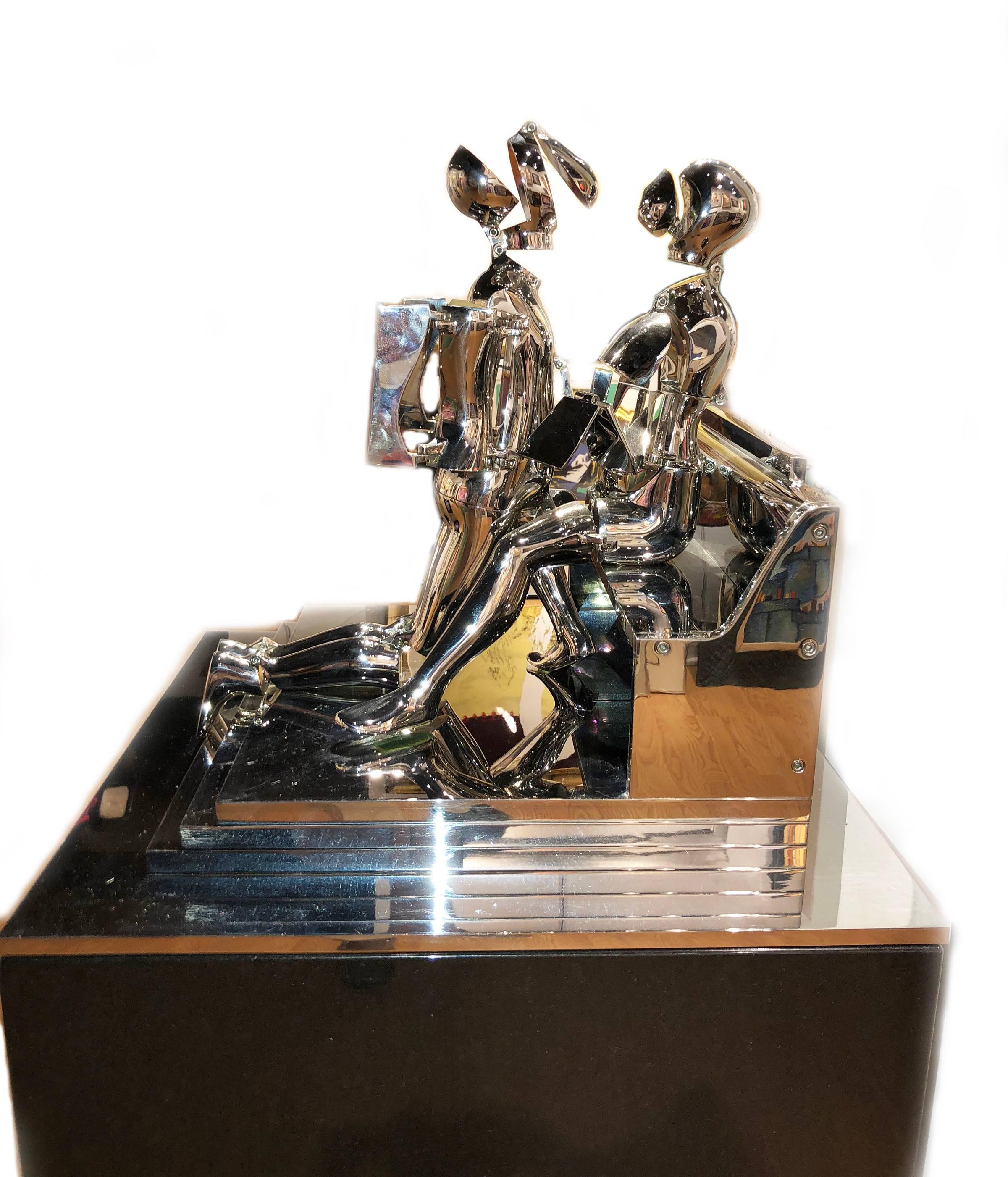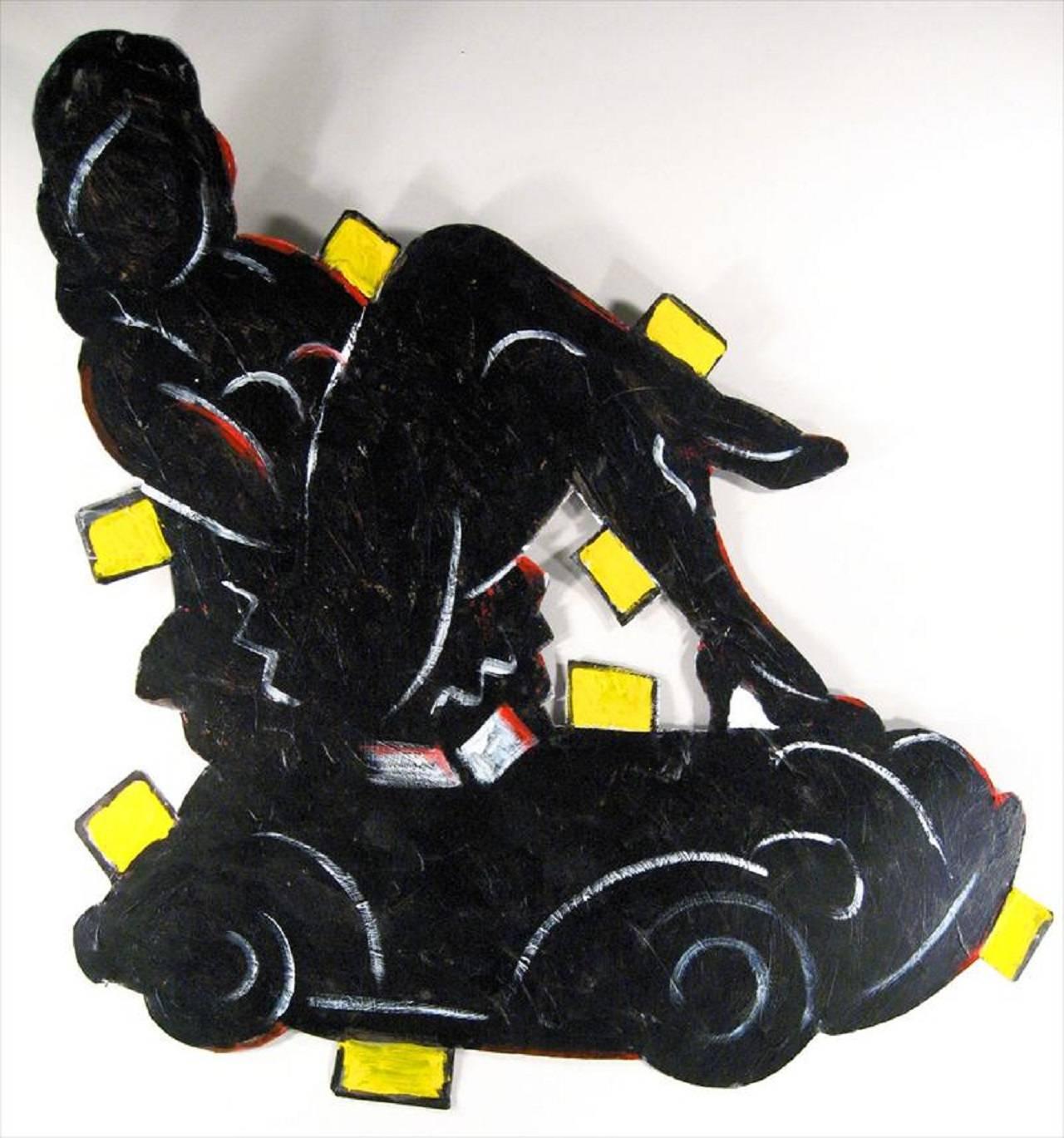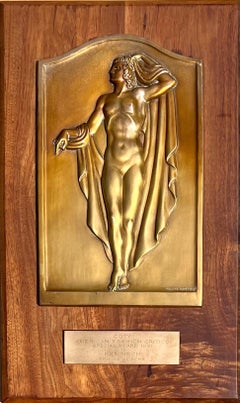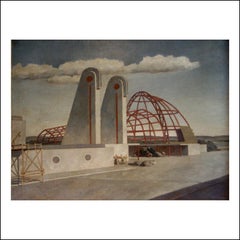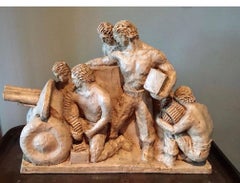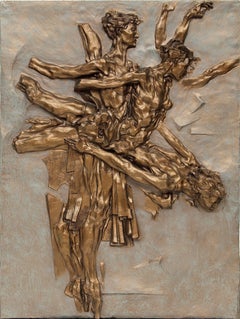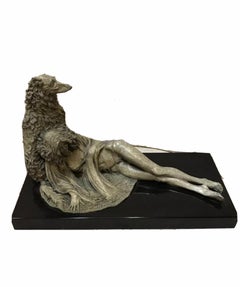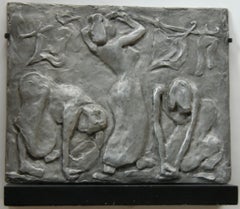
"Washing Women" Cast Aluminum Plaque Sculpture WPA American Modern 20th Century
View Similar Items
Want more images or videos?
Request additional images or videos from the seller
1 of 4
Alice Carr de Creeft"Washing Women" Cast Aluminum Plaque Sculpture WPA American Modern 20th Centuryc. 1930s
c. 1930s
About the Item
- Creator:Alice Carr de Creeft (1899 - 1996, American)
- Creation Year:c. 1930s
- Dimensions:Height: 15 in (38.1 cm)Width: 15 in (38.1 cm)Depth: 4 in (10.16 cm)
- Medium:
- Movement & Style:
- Period:
- Condition:
- Gallery Location:New York, NY
- Reference Number:1stDibs: LU115626923122
About the Seller
5.0
Platinum Seller
These expertly vetted sellers are 1stDibs' most experienced sellers and are rated highest by our customers.
Established in 2008
1stDibs seller since 2019
160 sales on 1stDibs
More From This SellerView All
- 1961 Coty Award Plaque Kenneth Hairdresser Jacqueline Onassis Bronze FashionLocated in New York, NY1961 Coty Award Plaque Kenneth Hairdresser Jacqueline Onassis Bronze Fashion Bronze on wood. The wood plaque measures 12 3/4" by 20 3/4 inches. The bronze plaque itself is 13 3/4 x 8 3/4 inches and the the bronze inscription, which reads "COTY, American Fashion Critics Special Award 1961 to KENNETH of LILY DACHE...Category
1960s American Modern Figurative Sculptures
MaterialsBronze
- 1, 000 piece Museum Quality Collection of Art & Objects from NYC 1939 Worlds FairBy Harry LaneLocated in New York, NY1,000 piece Museum Quality Collection of Art & Objects from NYC 1939 Worlds Fair Harry Lane (1891-1973) "1939 World’s Fair Construction," 30 x 40 inches, Oil on canvas, signed lower...Category
1930s American Modern Landscape Paintings
MaterialsPlaster, Photographic Paper, Canvas, Oil
- 2 Sculptures: "The Power" & "The Glory" WPA Depression WWII era mid 20th centuryBy Agnes YarnallLocated in New York, NY2 Sculptures: "The Power" & "The Glory" WPA Depression WWII era mid 20th century by Agnes Yarnall circa 1940s. Sculptor, painter, poet and artistic historian, Agnes Yarnall has, since the age of six been breathing life into her art. Renowned as a sculptor, whose commissioned portrayals of contemporary celebrities are prized. She has sculpted Judith Anderson, Edna St. Vincent Millay, Carl Sandburg...Category
1940s American Modern Figurative Sculptures
MaterialsPlaster
- Barge Toiler -Mid 20th Century Modern WPA Labor Plaster Depression-Era SculptureBy Max KalishLocated in New York, NY"Barge Toiler" by Max Kalish is a Mid 20th Century modern Depression-Era sculpture from his Labor series. The WPA era work is made of plaster. Max Kalish (1891 – 1945) Barge Toiler...Category
1930s American Modern Figurative Sculptures
MaterialsPlaster
- "Pioneer Family" WPA American Modernism Plaster Maquette Realism 20th CenturyBy William ZorachLocated in New York, NY"Pioneer Family," 23 1/2 x 16 1/4 x 10 3/4 inPlaster. c. 1927. Unsigned. Realism The Smithsonian has a cast of this sculpture in its collection. Pictured on the cover of “The Sculpt...Category
1920s American Modern Figurative Sculptures
MaterialsPlaster
- STRIDENT MAN Carved Wood Sculpture Hollywood WPA Modernist Puppet Mid-CenturyLocated in New York, NYThis 18 x 9 x 4 inch carved wood sculpture is unsigned and comes directly from the artist's family. Louis 'Lou' Bunin (28 March 1904 – 17 February 1994) was an American puppeteer, artist, and pioneer of stop-motion animation in the latter half of the twentieth century. While working as a mural artist under Diego Rivera in Mexico City in 1926, Bunin created political puppet shows using marionettes...Category
1940s American Modern Figurative Sculptures
MaterialsWood
You May Also Like
- Arabesque, Female Ballet Dancer in Motion, Bronze & Gray Bas Relief SculptureBy Eric BransbyLocated in Denver, COA figurative bas relief sculpture of a female ballet dancer moving through arabesque pose by Colorado/Missouri artist, Eric Bransby (1916-1920). Bronze, Polymer forton casting. Provenance: Collection of the artist Eric James Bransby is a muralist, painter, illustrator, and teacher. Bransby studied at the Colorado Springs Fine Art Center in Colorado under Thomas Hart Benton, Jean Charlot, Boardman Robinson, and Josef Albers. He also studied at the Yale School of Fine Art. Bransby painted the Rockhurst Library Triptych Mural at the University of Missouri at Kansas City, where he was an associate professor of art. Bransby has also painted murals at Brigham Young University, the Air Force Academy...Category
20th Century American Modern Figurative Sculptures
MaterialsBronze
- LADY AND SCOTTISH DOGLocated in Pasadena, CAMagnificent beautiful masterpiece bronze sculpture of lady with the Scottish Deer Hunter dog bronze comes with green patina; 1/10 So beautiful and a lot...Category
2010s American Modern Figurative Sculptures
MaterialsBronze
$5,200 Sale Price20% Off - Native American Indian Eyes behind a large Rock.By Carl KaubaLocated in Pasadena, CAIndian Eyes, by Austrian artist Carl Kauba shows an Native American behind a large rock. Is he hiding? and if so, from whom and why? That is left for the viewers imagination. This statue is cast in the finest American bronze, finished in the traditional dark brown patina, hand polished to bring out the awesome highlights and mounted on a black or green marble base. Due to the handmade process. 7.5″ H x 8.5″ L Carl Carl Kauba was born August 13, 1865 in Vienna, Austria. The son of a shoemaker, Kauba chose to follow his calling into the world of art. Collectors now rank him in a class with Remington and Russell as one of the great portrayers of American Western. His subjects were typically American Indians, calvarymen, cowboys, and roughriders. In addition to his American bronzes, Kauba produced a lifetime’s worth of Austrian statuary. His work became fully appreciated on both sides of the Atlantic. Carl studied at the Academy of Fine Arts in Vienna under professor Laufenberg. Later he would study at the academies under Carl Waschmann and Stefan Schwartz. Next, he went to Paris in 1886 to further study before he set off for the U.S. In fact, some debate still remains as to whether Kauba ever visited the U.S. Kauba’s fascination with the West was fired by the stories of the German writer, Carl May, whose tales of Western adventure were well known throughout Europe. Most authorities feel that he was about twenty-five years old when he traveled widely throughout the American West. He then returned to Austria with voluminous notes, sketches, and several models of Western sculpture...Category
Early 20th Century American Modern Sculptures
MaterialsBronze
- Buffalo, Silver Sculpture by Arnold GoldsteinLocated in Long Island City, NYSilver cast metal sculpture of an American buffalo created by American artist Arnold Goldstein. This artwork has the signature inscribed on the belly.Category
1970s American Modern Figurative Sculptures
MaterialsMetal
$1,200 Sale Price20% Off - Samson, Bronze Sculpture by Arnold GoldsteinLocated in Long Island City, NYBronze sculpture of blind Samson collapsing the temple in the ultimate act in the story of Samson and Delilah created by American artist Arnold Goldstein...Category
1970s American Modern Figurative Sculptures
MaterialsBronze
- The Test, Assembled Kinetic Modernist Sculpture Puzzle ConstructionBy William King (b.1925)Located in Surfside, FL"The Test," 1970 Aluminum sculpture in 5 parts. Artist's cipher and AP stamped into male figure, front, 20 5/16" x 12 1/2" x 6 5/7" (approx.) American sculptor King is most noted for his long-limbed figurative public art sculptures depicting people engaged in everyday activities such as reading or conversing. He created his busts and figures in a variety of materials, including clay, wood, metal, and textiles. William Dickey King was born in Jacksonville, Florida. As a boy, William made model airplanes and helped his father and older brother build furniture and boats. He came to New York, where he attended the Cooper Union and began selling his early sculptures even before he graduated. He later studied with the sculptor Milton Hebald and traveled to Italy on a Fulbright grant. Mr. King worked in clay, wood, bronze, vinyl, burlap and aluminum. He worked both big and small, from busts and toylike figures to large public art pieces depicting familiar human poses — a seated, cross-legged man reading; a Western couple (he in a cowboy hat, she in a long dress) holding hands; a tall man reaching down to tug along a recalcitrant little boy; a crowd of robotic-looking men walking in lock step. Mr. King’s work often reflected the times, taking on fashions and occasional politics. In the 1960s and 1970s, his work featuring African-American figures (including the activist Angela Davis, with hands cuffed behind her back) evoked his interest in civil rights. But for all its variation, what unified his work was a wry observer’s arched eyebrow, the pointed humor and witty rue of a fatalist. His figurative sculptures, often with long, spidery legs and an outlandishly skewed ratio of torso to appendages, use gestures and posture to suggest attitude and illustrate his own amusement with the unwieldiness of human physical equipment. His subjects included tennis players and gymnasts, dancers and musicians, and he managed to show appreciation of their physical gifts and comic delight at their contortions and costumery. His suit-wearing businessmen often appeared haughty or pompous; his other men could seem timid or perplexed or awkward. Oddly, or perhaps tellingly, he tended to depict women more reverentially, though in his portrayals of couples the fragility and tender comedy inherent in couplehood settled equally on both partners. His first solo exhibit took place in 1954 at the Alan Gallery in New York City. King was elected to the American Academy of Arts and Letters in 2003, and in 2007 the International Sculpture Center honored him with the Lifetime Achievement in Contemporary Sculpture Award. Mr. King’s work is in the collections of the Metropolitan Museum of Art, Guggenheim Museum, Whitney Museum and the Museum of Modern Art in New York and the Hirshorn Museum at the Smithsonian American Art Museum in Washington, among other places, and he had dozens of solo gallery shows in New York and elsewhere. Reviews of his exhibitions frequently began with the caveat that even though the work was funny, it was also serious, displaying superior technical skills, imaginative vision and the bolstering weight of a range of influences, from the ancient Etruscans to American folk art to 20th-century artists including Giacometti, Calder and Elie Nadelman. The New York Times critic Holland Cotter once described Mr. King’s sculpture as “comical-tragical-maniacal,” and “like Giacomettis conceived by John Cheever.”Category
1970s American Modern Figurative Sculptures
MaterialsMetal
Recently Viewed
View AllMore Ways To Browse
Metal Vintage Signs Plaques And Signs
Calder Santa
Stirling Vintage
Barbara Robertson
Vintage Woodland Animals
Bronze Yoga Figure
Erekle Tsuladze
Golek Puppet
David Hostetler
Indonesian Golek Puppet
Unknown Artist Abstract White Stone Sculpture
Thomas J Evans
Wayang Golek
Arman Saxophone
Born Wild Orlinski
Changbai Mountain
Five Dancers Statue
Erica Larkin Gaudet

